
Since the founding of the Montreal & Southern Counties Railway in 1897, its directors have held the objective of extending their electric train service to the town of Granby. This plan will be fulfilled in 1914 by the construction of the last electrified section of track, along a distance of 15 miles, between Saint-Césaire and Granby. The work begins in Saint-Césaire in May 1914, and ends with an inauguration ceremony to celebrate the arrival of electric streetcars in Granby on April 29, 1916. To provide this new service, the company purchases a brand new class of streetcars, the 600 series, built by the National Steel Car Company. It believes that adding these streetcars will make the service more appealing, since the new vehicles give passengers a much more comfortable ride throughout the 47.5-mile journey to Montreal. This new electric railway features many stops along its route between Saint-Césaire and Granby. In the municipality of Saint-Paul-d’Abbotsford, these stops are: D’Arcy Corners (where Route 112 crosses Route 235 today), Abbotsford Junction (where the two railway lines intersect), Abbotsford (the village station), Marshall Road (at the north end of Petit Rang Saint-Charles) and Parish Line (at the top of Chemin de la Grande Ligne).
On Wednesday, December 15, 1915, electric train service between Abbotsford (Saint-Paul-d’Abbotsford) and Montreal is inaugurated, a distance of approximately 37 miles. A small station in the traditional rectangular design, with a four-slope roof, is provided for travellers and freight shippers. The municipality now has two different railways to serve its citizens. In 1916, a streetcar ticket to Montreal is $1.00, with a round trip priced at $1.90 and a booklet of 10 tickets costing $7.00. Depending on the year, the Montreal & Southern Counties Railway offers four or six trains a day in each direction. It also gives dairy farmers an efficient way to transport milk; and in the autumn, apple growers can use the freight cars to transport barrels of fresh fruit to city markets. As in all the stations of this era, there is a ticket office, a telegraph machine and a freight transport service. The arrival of this means of transport will also promote tourism, especially when the apple trees are in blossom and during the autumn harvest period.
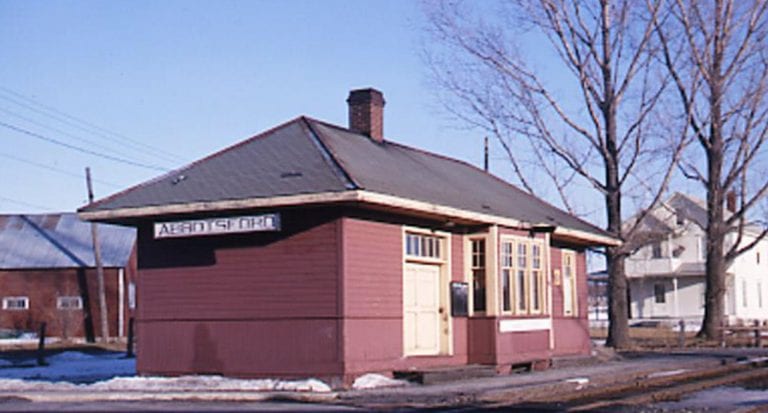
The station of the Montreal & Southern Counties Railway in Abbotsford.
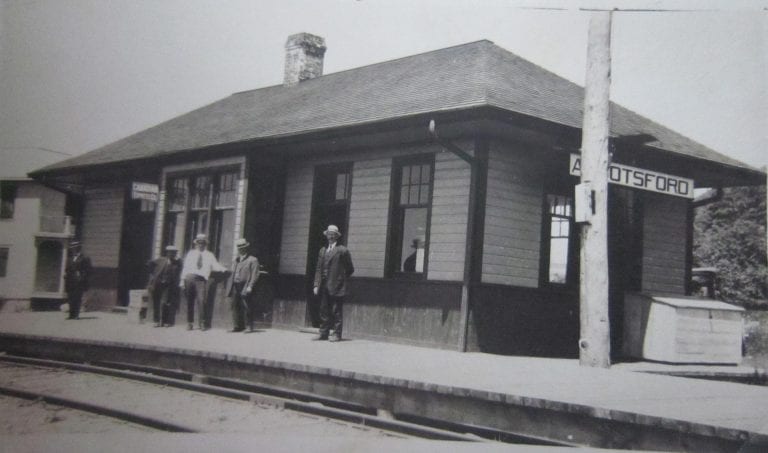
Travellers waiting for the electric streetcar on the platform of Abbotsford Station.
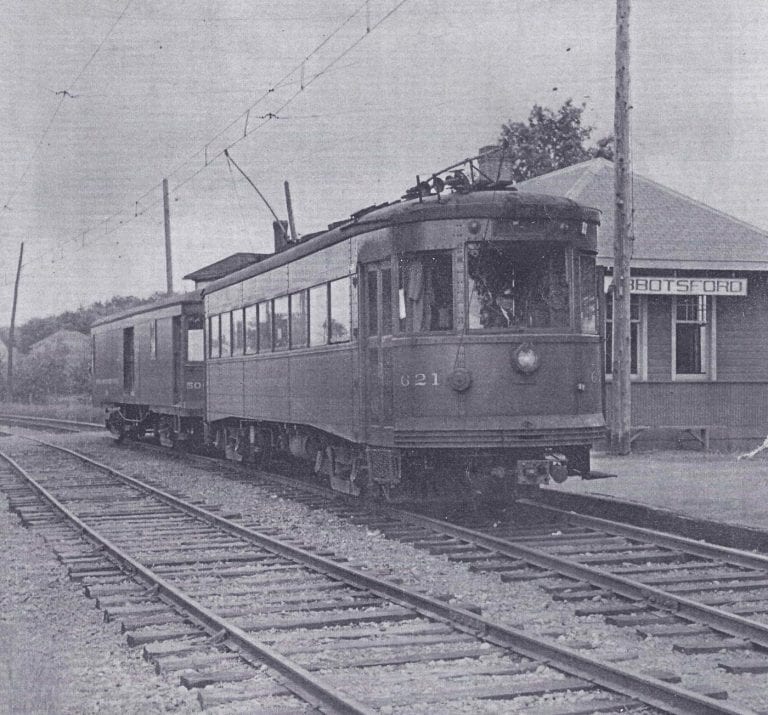
Car 621 and Milk & Express Car 501 in front of Abbotsford Station. Note the siding track in front of the station.
The arrival of the Montreal & Southern Counties Railway station leads to the opening of a new road in Saint-Paul-d’Abbotsford, called Rue de la Station or Rue de la Gare. Today, it is Rue Codaire. From 1915, many residents wishing to enjoy proximity to the railway station will build houses for themselves in the vicinity.
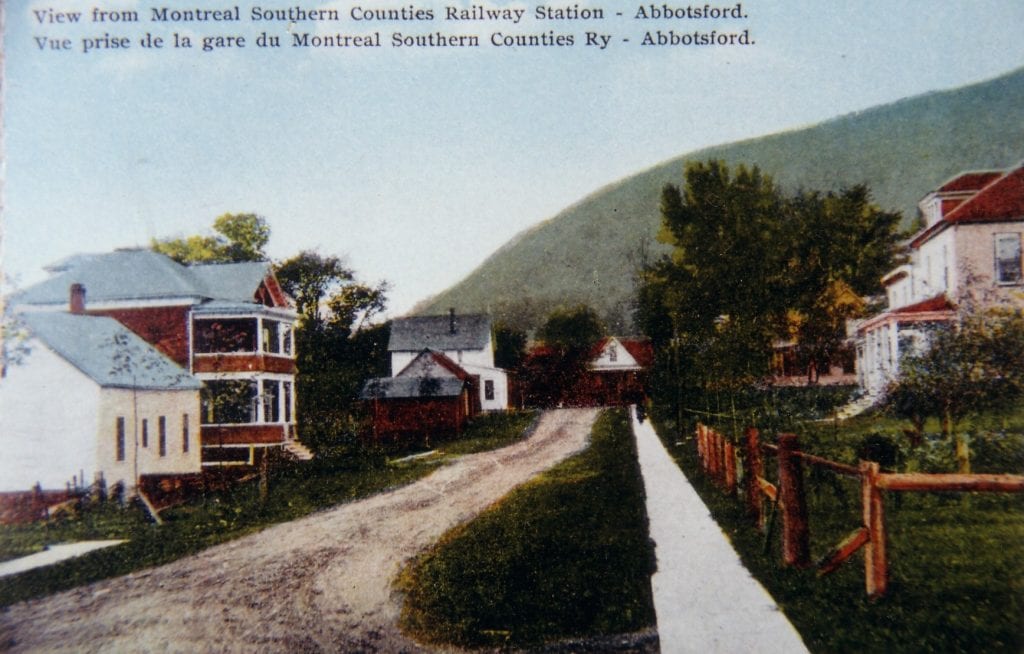
Rue de la Station or Rue de la Gare, circa 1930. Note the wooden sidewalk.
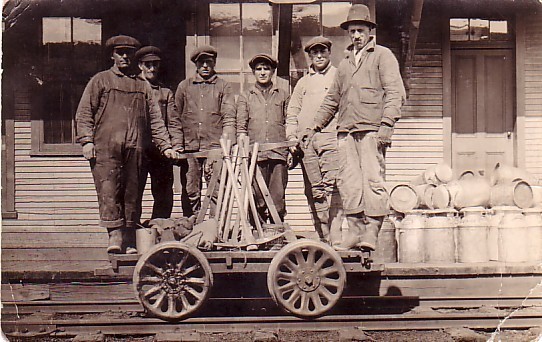
On the platform of Abbotsford Station, six railway workers pose with tools before departing on their “pompeu”—as they call this light auxiliary rail vehicle or draisine. To the right, we see milk cans waiting for pickup.
In the mid-1920s, apple growers establish this company as a packaging operation for apples from the local orchards. From September to December, about thirty people work in this small warehouse. Later, around 1930, the company will merge with a new cooperative, the Abbotsford Fruit Growers Co-op. The expanded co-op will operate under this name until joining the Coopérative des pomiculteurs de Farnham (Farnham Apple Farmers Cooperative) after the Second World War. The co-op’s location, close to the two railways in Saint-Paul-d’Abbotsford, will make it much easier and faster to organize shipments of apples to large cities.
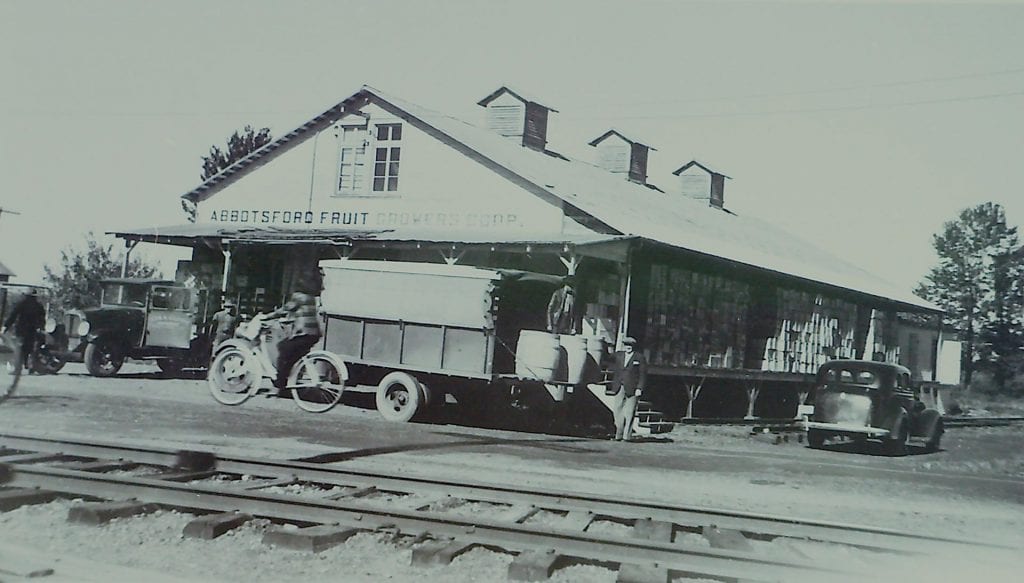
The Abbotsford Fruit Growers Co-op, circa 1930.
On Saturday, November 24, 1951, electric streetcars stop arriving in Saint-Paul-d’Abbotsford. Route No. 1 (now Route 112) has been enhanced to accommodate the increasing number of cars and trucks on the road. A rapid intercity bus service is now preferred by many passengers. Some of the streetcars are showing their age; they would have to be replaced. All of these factors encourage the Montreal & Southern Counties Railway to discontinue service on the line. The company decides to focus instead on the freight train service, and invests in heavy modern cars drawn by diesel locomotives. Passenger train service will disappear from Saint-Paul-d’Abbotsford on June 19, 1955. The freight transportation service will be maintained. However, rail traffic in the cargo business will decline continuously, and in the end the service will be offered only three days each week. In 1989, the Canadian National Railway will transport only 23 carloads; in 1990, it will be 95 carloads; and in 1991, the number will drop to a mere 20 carloads. Finally, the Canadian Transportation Agency will allow the CNR to abandon its operations on the Granby–Marieville segment of the line as of January 31, 1994.
In 1897, the company is incorporated. Its mission is to build and operate an electrified railway line from Chambly to Sherbrooke—but in the end, the line will reach no farther than Granby. In 1909, Montreal will become its principal anchor point, and gradually, the company will establish an interurban electric streetcar service in Saint-Lambert, Longueuil, Ranelagh, Mackayville and, in 1913, Chambly/Richelieu.

Location of the pannel on La Route des Champs



Research and text
Gilles Bachand, historian
Société d'histoire et de généalogie des Quatres Lieux
References and photographs (2020)
Archives of the Société d’histoire et de généalogie des Quatre Lieux
Archives of the Société d’histoire de la Seigneurie de Monnoir